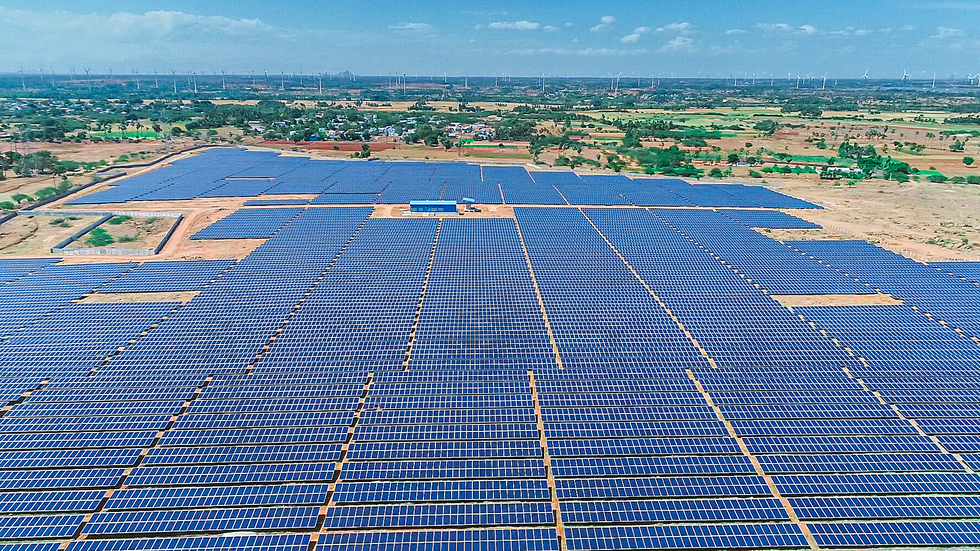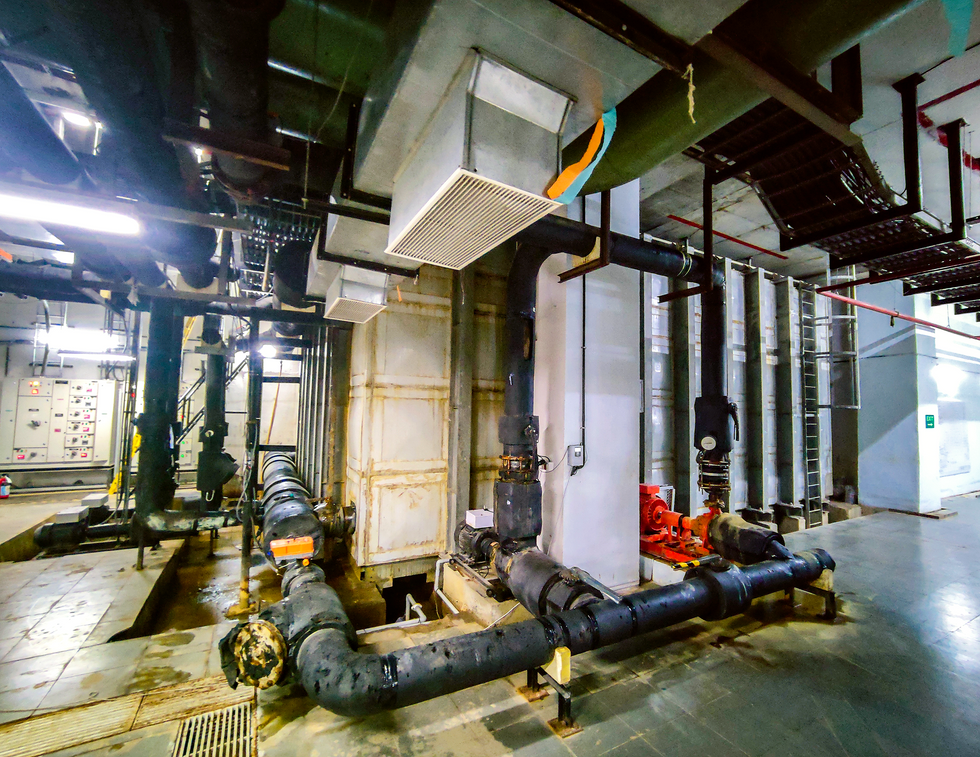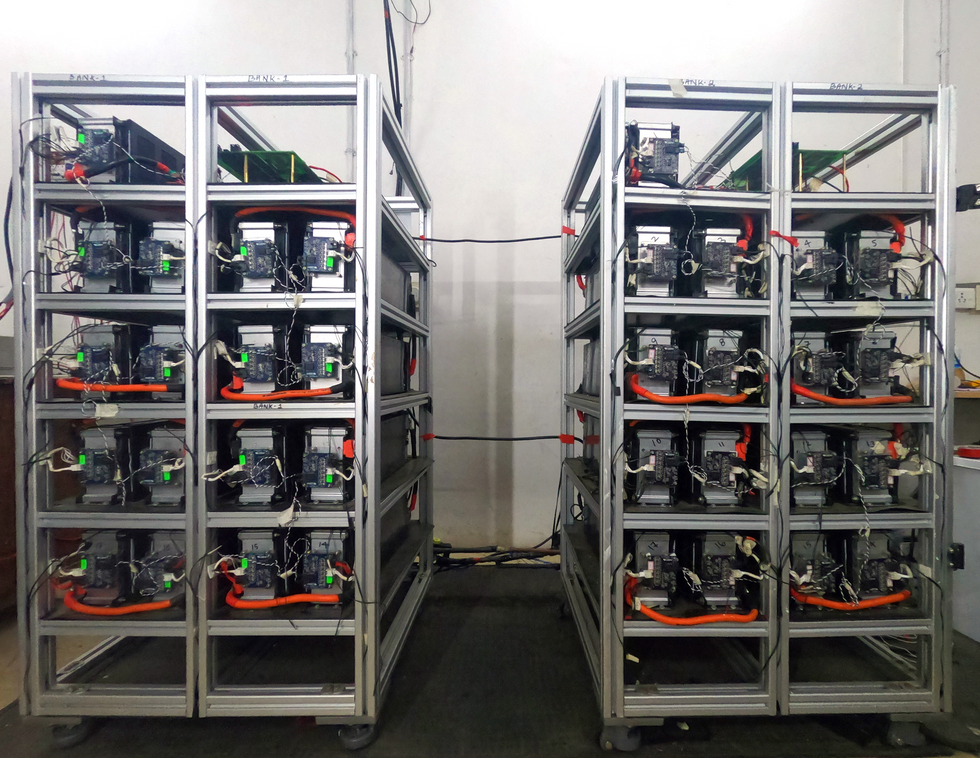How to Hasten India’s Transition Away From Coal

The rising threat of global warming requires that every country act now. The question is how much any one country should do.
India is 126th in the world in per capita carbon dioxide emissions, according to a 2020 European Union report. One might argue that the onus of reversing global warming should fall on the developed world, which on a per capita basis consumes much more energy and emits significantly more greenhouse gases. However, India ranks third in the world in total greenhouse gas emissions-the result of having the second-largest population and being third largest in energy consumption.
As India's GDP and per capita income continue to climb, so too will its energy consumption. For instance, just 8 percent of Indian homes had air-conditioning in 2018, but that share is likely to rise to 50 percent by 2050. The country's electricity consumption in 2019 was nearly six times as great as in 1990. Greenhouse gas emissions will certainly grow too, because India's energy generation is dominated by fossil fuels-coal-fired power plants for electricity, coal- and gas-fired furnaces for industrial heating, liquid petroleum gas for cooking, and gasoline and diesel for transportation.
Fossil fuels dominate even though renewable energy generation in many parts of the world now costs less than fossil-fuel-based electricity. While electricity from older coal plants in India costs 2.7 U.S. cents per kilowatt-hour and 5.5 cents from newer plants that have additional pollution-control equipment, the cost of solar energy has dropped to 2.7 cents per kilowatt-hour, and wind power to 3.4 cents per kilowatt-hour. As renewable energy has steadily gotten cheaper, the installed capacity has grown, to 110 gigawatts. That amounts to 27 percent of capacity, compared to coal's share, which is 52 percent. The government of India has set a target of 450 GW of renewable energy capacity by 2030.
Yet in terms of energy generated, renewable energy in India still falls short. In 2021, about 73 percent of the country's electricity was produced from coal, and only 9.6 percent from solar and wind power. That's because solar and wind power aren't available around the clock, so the proportion of the installed capacity that gets used is just 20 to 30 percent. For coal, the capacity utilization rate can go as high as 90 percent.
As renewable energy capacity grows, the only way to drastically reduce coal in the electricity mix is by adding energy storage. Although some of the newer solar plants and wind farms are being set up with large amounts of battery storage, it could be decades before such investments have a significant impact. But there is another way for India to move faster toward its decarbonization goal: by focusing the renewable-energy push in India's commercial and industrial sectors.
India has some 40,000 commercial complexes, which house offices and research centers as well as shopping centers and restaurants. Together they consume about 8 percent of the country's electricity. The total footprint of such complexes is expected to triple by 2030, compared to 2010. To attract tenants, the managers of these complexes like to project their properties as users of renewable energy.
 A 2-megawatt solar plant located 500 kilometers from IITM Research Park provides dedicated electricity to the complex. A 2.1-MW wind farm now under construction will feed IITMRP through a similar arrangement.IIT Madras
A 2-megawatt solar plant located 500 kilometers from IITM Research Park provides dedicated electricity to the complex. A 2.1-MW wind farm now under construction will feed IITMRP through a similar arrangement.IIT Madras
India's industrial sector, meanwhile, consumes about 40 percent of the country's electricity, and many industrial operators would also be happy to adopt a greater share of renewable energy if they can see a clear return on investment.
Right now, many of these complexes use rooftop solar, but limited space means they can only get a small share of their energy that way. These same complexes can, however, leverage a special power-transmission and wheeling" policy that's offered in India. Under this arrangement, an independent power-generation company sets up solar- or wind-power plants for multiple customers, with each customer investing in the amount of capacity it needs. In India, this approach is known as a group-captive model. The generating station injects the electricity onto the grid, and the same amount is immediately delivered, or wheeled in, to the customer, using the utility's existing transmission and distribution network. A complex can add energy storage to save any excess electricity for later use. If enough commercial, industrial, and residential complexes adopt this approach, India could rapidly move away from coal-based electricity and meet a greater share of its energy needs with renewable energy. Our group at the Indian Institute of Technology Madras has been developing a pilot to showcase how a commercial complex can benefit from this approach.
The commercial complex known as the IITM Research Park, or IITMRP, in Chennai, is a 110,000-square-meter facility that houses R&D facilities for more than 250 companies, including about 150 startups, and employs about 5,000 workers. It uses an average of 40 megawatt-hours of electricity per weekday, or about 12 gigawatt-hours per year. Within the campus, there is 1 megawatt of rooftop solar, which provides about 10 percent of IITMRP's energy. The complex is also investing in 2 MW of captive solar and 2.1 MW of captive wind power off-site, the electricity from which will be wheeled in. This will boost the renewable-energy usage to nearly 90 percent in about three years. Should the local power grid fail, the complex has backup diesel generators.
Of course, the generation of solar and wind energy varies from minute to minute, day to day, and season to season. The total generated energy will rarely meet IITMRP's demand exactly; it will usually either exceed demand or fall short.
To get closer to 100 percent renewable energy, the complex needs to store some of its wind and solar power. To that end, the complex is building two complementary kinds of energy storage. The first is a 2-MWh, 750-volt direct-current lithium-ion battery facility. The second is a chilled-water storage system with a capacity equivalent to about 2.45 MWh. Both systems were designed and fabricated at IITMRP.
The battery system's stored electricity can be used wherever it's needed. The chilled-water system serves a specific, yet crucial function: It helps cool the buildings. For commercial complexes in tropical climates like Chennai's, nearly 40 percent of the energy goes toward air-conditioning, which can be costly. In the IITMRP system, a central heating, ventilation, and air-conditioning (HVAC) system chills water to about 6 C, which is then circulated to each office. A 300-cubic-meter underground tank stores the chilled water for use within about 6 to 8 hours. That relatively short duration is because the temperature of the chilled water in the tank rises about 1 C every 2 hours.
 The IITMRP's chilled-water system provides air-conditioning to the complex. Water is chilled to about 6 C and then stored in this 300-cubic-meter underground tank for later circulation to the offices.IIT Madras
The IITMRP's chilled-water system provides air-conditioning to the complex. Water is chilled to about 6 C and then stored in this 300-cubic-meter underground tank for later circulation to the offices.IIT Madras
The heat transfer capacity of the chilled-water system is 17,500 megajoules, which as mentioned is equivalent to 2.45 MWh of battery storage. The end-to-end round-trip energy loss is about 5 percent. And unlike with a battery system, you can charge" and discharge" the chilled-water tank several times a day without diminishing its life span.
Although energy storage adds to the complex's capital costs, our calculations show that it ultimately reduces the cost of power. The off-site solar and wind farms are located, respectively, 500 and 600 kilometers from IITMRP. The cost of the power delivered to the complex includes generation (including transmission losses) of 5.14 cents/kWh as well as transmission and distribution charges of 0.89 cents/kWh. In addition, the utilities that supply the solar and wind power impose a charge to cover electricity drawn during times of peak demand. On average, this demand charge is about 1.37 cents/kWh. Thus, the total generation cost for the solar and wind power delivered to IITMRP is about 7.4 cents/kWh.
There's also a cost associated with energy storage. Because most of the renewable energy coming into the complex will be used immediately, only the excess needs to be stored-about 30 percent of the total, according to our estimate.
So the average cost of round-the-clock renewable energy works out to 9.3 cents/kWh, taking into account the depreciation, financing, and operation costs over the lifetime of the storage. In the future, as the cost of energy storage continues to decline, the average cost will remain close to 9 cents/kWh, even if half of the energy generated goes to storage. And the total energy cost could drop further with declines in interest rates, the cost of solar and wind energy, or transmission and demand charges.
For now, the rate of 9.3 cents/kWh compares quite favorably to what IITMRP pays for regular grid power-about 15 cents/kWh. That means, with careful design, the complex can approach 100 percent renewable energy and still save about a third on the energy costs that it pays today. Keep in mind that grid power in India primarily comes from coal-based generation, so for IITMRP and other commercial complexes, using renewable energy plus storage has a big environmental upside.
 IITM Research Park's lithium-ion battery facility stores excess electricity for use after the sun goes down or when there's a dip in wind power.IIT Madras
IITM Research Park's lithium-ion battery facility stores excess electricity for use after the sun goes down or when there's a dip in wind power.IIT Madras
Electricity tariffs are lower for India's industrial and residential complexes, so the cost advantage of this approach may not be as pronounced in those settings. But renewable energy can also be a selling point for the owners of such complexes-they know many tenants like having their business or home located in a complex that's green.
Although IITMRP's annual consumption is about 12 GWh, the energy usage, or load, varies slightly from month to month, from 970 to 1,100 MWh. Meanwhile, the energy generated from the captive off-site solar and wind plants and the rooftop solar plant will vary quite a bit more. The top chart ("Monthly Load and Available Renewable Energy at IITMRP") shows the estimated monthly energy generated and the monthly load.
As is apparent, there is some excess energy available in May and July, and an overall energy deficit at other times. In October, November, and December, the deficit is substantial, because wind-power generation tends to be lowest during those months. Averaged over a year, the deficit works out to be 11 percent; the arrangement we've described, in other words, will allow IITMRP to obtain 89 percent of its energy from renewables.
For the complex to reach 100 percent renewable energy, it's imperative that any excess energy be stored and then used later to make up for the renewable energy deficits. When the energy deficits are particularly high, the only way to boost renewable energy usage further will be to add another source of generation, or else add long-term energy storage that's capable of storing energy over months. Researchers at IITMRP are working on additional sources of renewable energy generation, including ocean, wave, and tidal energy, along with long-term energy storage, such as zinc-air batteries.
IITM Research Park's electricity load and available renewable energy vary across months [top] and over the course of a single day [bottom]. To make up for the deficit in renewable energy, especially during October, November, and December, additional renewable generation or long-term energy storage will be needed. At other times of the year, the available renewable energy tends to track the load closely throughout the day, with any excess energy sent to storage.
For other times of the year, the complex can get by on a smaller amount of shorter-term storage. How much storage? If we look at the energy generated and the load on an hourly basis over a typical weekday, we see that the total daily load generally matches the total daily demand, but with small fluctuations in surplus and deficit. Those fluctuations represent the amount of energy that has to move in and out of storage. In the bottom chart ("Daily Load and Available Renewable Energy at IITMRP"), the cumulative deficit peaks at 1.15 MWh, and the surplus peaks at 1.47 MWh. Thus, for much of the year, a storage size of 2.62 MWh should ensure that no energy is wasted.
This is a surprisingly modest amount of storage for a complex as large as IITMRP. It's possible because for much of the year, the load follows a pattern similar to the renewable energy generated. That is, the load peaks during the hours when the sun is out, so most of the solar energy is used directly, with a small amount of excess being stored for use after the sun goes down. The load drops during the evening and at night, when the wind power is enough to meet most of the complex's demand, with the surplus again going into storage to be used the next day, when demand picks up.
On weekends, the demand is, of course, much less, so more of the excess energy can be stored for later use on weekdays. Eventually, the complex's lithium-ion battery storage will be expanded to 5 MWh, to take advantage of that energy surplus. The batteries plus the chilled-water system will ensure that enough storage is available to take care of weekday deficits and surpluses most of the time.
As mentioned earlier, India has some 40,000 commercial complexes like IITMRP, and that number is expected to grow rapidly. Deploying energy storage for each complex and wheeling in solar and wind energy make sense both financially and environmentally. Meanwhile, as the cost of energy storage continues to fall, industrial complexes and large residential complexes could be enticed to adopt a similar approach. In a relatively short amount of time-a matter of years, rather than decades-renewable energy usage in India could rise to about 50 percent.
On the way to that admittedly ambitious goal, the country's power grids will also benefit from the decentralized energy management within these complexes. The complexes will generally meet their own supply and demand, enabling the grid to remain balanced. And, with thousands of complexes each deploying megawatts' worth of stationary batteries and chilled-water storage, the country's energy-storage industry will get a big boost. Given the government's commitment to expanding India's renewable capacity and usage, the approach we're piloting at IITMRP will help accelerate the push toward cleaner and greener power for all.
This article appears in the July 2022 print issue as Weaning India from Coal."